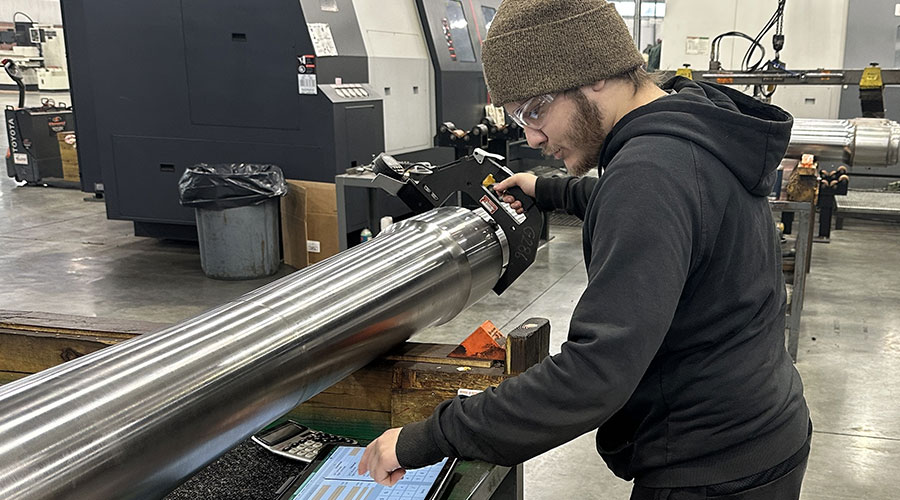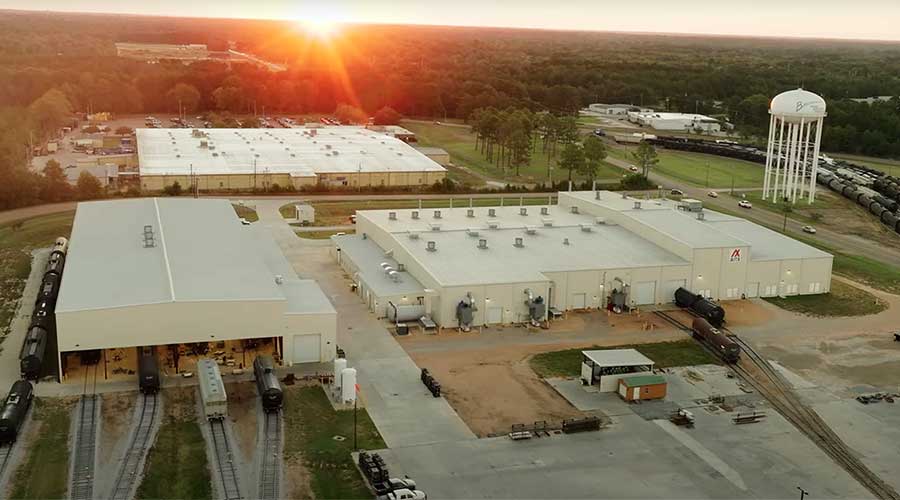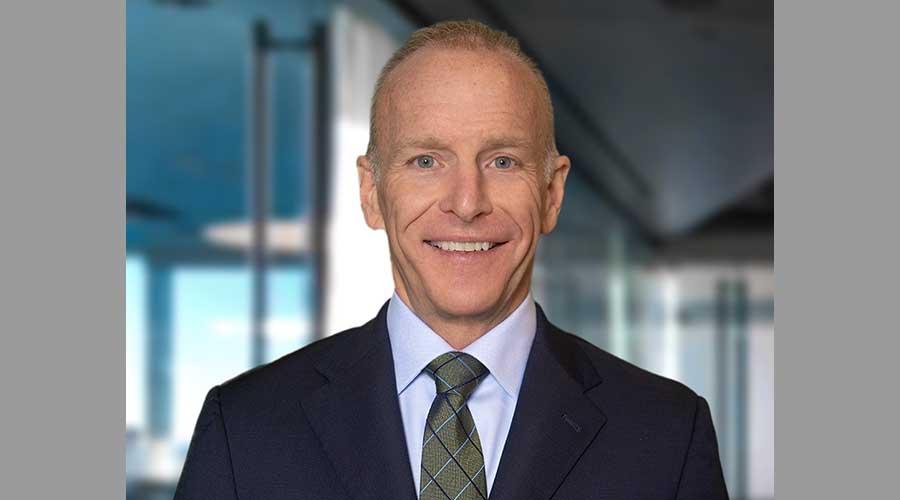Stay updated on news, articles and information for the rail industry
 railPrime
railPrime
January 2021
Rail News: Mechanical
Locomotive repair shops hope inquiries, contracts rebound in a post-pandemic 2021
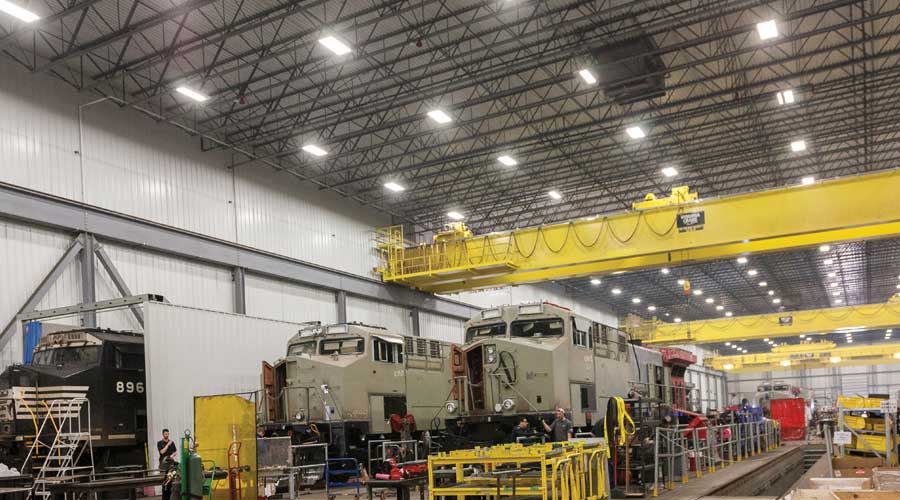
Compiled by Julie Sneider, Senior Associate Editor
The year 2020 was unpredictable — to say the least — for most rail industry businesses due to the sudden and dramatic economic downturn caused by the COVID-19 pandemic.
For some locomotive remanufacturing and rebuilding service providers, the pandemic hit a market that already was a bit soft due in part to railroads’ cost-control and efficiency programs. Some of those were in direct response to the downturn in volumes that came with the pandemic, while others were part of ongoing initiatives to transition to precision scheduled railroading (PSR) and more cost-effective operating strategies.
To gauge market trends in 2020 versus what might lie ahead for 2021, Progressive Railroading reached out to a number of companies that offer an array of locomotive overhaul, repowering and/or refurbishing services.
Six service providers responded: Birmingham Rail & Locomotive (BR&L); Brookville Equipment Corp.; PowerRail Inc.; Progress Rail; Railserve Inc.; and Wabtec Corp. Following are their emailed answers to the magazine’s questions.
How did your business fare in 2020? What drove or impeded business?
BR&L:
2020 was a year of unexpected growth in the rebuild/overhaul sector within the locomotive division at Birmingham Rail & Locomotive. We were awarded rebuild contracts for multiple units during 2020.
Brookville:
Overall, we are currently seeing lower demand for remanufacturing and rebuilding of existing fleets and stronger demand for new specialty locomotives. We did not land any new rebuild/remanufacturing locomotive programs in 2020, but we are currently manufacturing a fleet of replacement autonomous surface locomotives for a mining operation in northern Canada. That’s not to say there is no demand, but we just aren’t seeing the number of rebuild programs come to market that we were over the past few years. [It] has been an interesting and unpredictable year with the global pandemic, so once the transit side picks up again and the economy begins to rebound, we expect to see an increase in rebuild program inquiries going forward.
PowerRail:
Our locomotive overhauls and remanufacturing were consistent with prior years in the first half of 2020, and then softened as capital programs were put on hold and some programs were pushed out to 2021 or 2022.
Progress Rail:
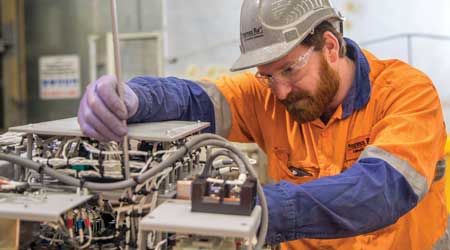
At least for our business, activity in the locomotive remanufacturing and rebuilding space remained roughly flat, as Class Is continued to drive efficiencies, continuous improvement and tightly controlled costs.
Railserve:
Business held fairly steady. The majority of what we have done to this point is overhaul/rebuild work for our internal Railserve customer.
Wabtec:
[Our] modernization business remained relatively stable and continued to deliver for our customers. That is a tribute to how the company’s services business is aligned with the railroads’ business strategies by delivering significant improvements on reliability, haulage-ability and fuel savings.
What are you projecting for 2021?
BR&L:
[This year] looks promising for additional requests for quotes to overhaul/rebuild four axle locomotives. Projecting out, we feel that industries and leasing companies will need to keep assets such as switch engines in good working condition. Doing so will be vital to the success of leasing companies as well as industries that own locomotives.
Brookville:
We feel much of 2021 is contingent on a swift resolution to the pandemic and an ensuing economic recovery. We remain optimistic for both freight and transit markets in the mid- to long-term for both new and rebuild programs.
Railserve:
We are projecting business to be up in 2021 primarily because we are expanding our capacity and capabilities. We will be offering overhaul/rebuild/paint of conventional locomotives to all third parties instead of just handling internal work for Railserve’s switching operations.
PowerRail:
We are projecting the softness in the market in the last half of 2020 will most likely continue through the first half of 2021. We are seeing some of the rebuild programs tentatively scheduled for the back half of 2021. At PowerRail, we are putting in the necessary steps to be ready for the demand when it returns and can support the market with overhaul kits as required.
Wabtec:
We see continued opportunities for modernizations and, in some cases, new equipment in North America, as the new operating conditions demand more availability and reliability of the assets on the road. Wabtec’s focus on ensuring the installed base of locomotives deliver what’s needed for our customers — especially in a PSR world — helps us feel confident that we will continue to win business as we deliver value to our customers, and modernizations are a pivotal part of the value to the customer. The company is leveraging its modernization program and a suite of product upgrades to partner with customers on performance improvement to their fleets at a reasonable capex.
Were there certain types of locomotives that were more popular in 2020 for remanufactures or rebuilds than other types? Do you anticipate certain types to garner more work in 2021?
Brookville:
Specialty fleets for unique design profiles, clearances and custom applications have been more prominent than widely available, more standard locomotive fleets. This is likely due to the market availability of operational locomotives for more standard locomotive designs. In 2021, as the economy rebounds, we would hope to see more of a mix of specialty fleet rebuilds and standard fleet rebuilds.
PowerRail:
We saw a continued interest in the rebuild of road switchers, particularly in the mid- to lower-horsepower range. Some of this demand came from the excess locomotive selloff in the market and the opportunity to upgrade these locomotives with a PowerRail rebuild package with most of the content coming from within PowerRail manufacturing facilities.
Progress Rail:
Railroads continue to express interest in the latest technological advancements rather than specific locomotive models. This includes opportunities around in-cab electronics for remanufacturing efforts, upgraded locomotive control systems and energy management functionality, such as through our TALOS platform for new locomotives.
Railserve:
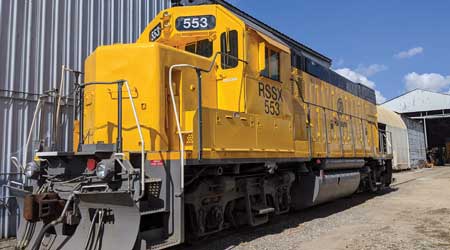
The Longview, Texas, locomotive shop focused primarily on refurbishing the LEAF locomotives for Railserve. We anticipate a great demand for our capabilities related to EMD yard and local locomotives.
Wabtec:
The modernization volume is predominantly focused on Dash 9s and AC4400s. The Dash 9s are DC-to-AC modernizations. Wabtec converts the propulsion system from older DC to AC, enabling customers to see significant improvements in fuel efficiency and hauling power of their assets. The AC4400s undergo a systems refresh bringing their performance to the latest standards and repurposing them to reflect changed strategies, delivering significant controls upgrades, traction, haulage ability and fuel savings. These modernizations support the sustainability initiatives for both customers and Wabtec. Customers have experienced substantial system-level outcomes, including up to 15% improved fuel efficiency, a 40% increase in reliability and a 50% increase in haulage ability.
Did you make any improvements or changes to your locomotive shops in 2020, or do you plan to do so in 2021?
BR&L:
[We] currently are in the process of having a 14,000-square-foot addition quoted. This will add four additional bays to the existing shop. If the capital project is approved, BR&L would improve its workable track space from three to seven. Currently, five locomotives can be in-shopped; this expansion would allow for 13 locomotives to be repaired at one time. BR&L also is expanding its storage capacity on property. Originally there were two storage tracks on property; during 2020 one new storage track was installed. In 2021, BR&L is hopeful to complete four additional storage track installs. This expansion will allow customers to ship revenue-generating work to BR&L faster and free up track space at their facilities.
Brookville:
We made some equipment upgrades [in 2020] to enhance our in-house capabilities — specifically in our cutting shop — which will expand our framing components fabrication offerings. In 2021, we’ll continue to evaluate how we can continue to become a more capable, vertically integrated locomotive manufacturer and rebuilder.
PowerRail:
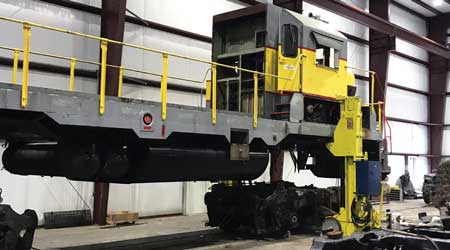
We have invested heavily on our processes and systems to further improve our performance to our valued customers. This year we implemented a new ERP system, complete with a manufacturing module, to accommodate the increase of made in-house components that PowerRail offers. In addition, we have invested in overhead cranes and fixtures to allow truck rebuilds to flow through our facility more efficiently, as well as installed new lifts to further support our locomotive rebuild programs.
Progress Rail:
While we do not have any changes to share, we have worked hard to be more nimble and improve the level of service our customers needed this year, and welcome the chance to serve them in 2021.
Railserve:
In 2020, we renewed our main feed track as well as rebuilt one of our storage tracks. We also focused on making process improvements to streamline our overhaul line. In 2021, we intend to install a freestanding overhead crane system with two 25-ton cranes. The cranes will be under roof and are being installed to repair and service locomotives in a more safe and efficient manner. We also intend to repair the remaining storage tracks so we can offer locomotive storage.
Wabtec:
[We] acquired RELCO Locomotives Inc. in 2020, a long-established player in the locomotive overhaul and maintenance industry. The acquisition expands the company’s freight services capabilities and capacity to support growth in the remanufacturing and repair business. More important in 2021, Wabtec continues to make upgrades to its modernization program with new product improvement offerings. The FDL Advantage is an upgrade that reduces fuel burn across the duty cycle on this older engine platform by up to 5%. Additionally, the Modular Control Architecture-Fleet Migration is a next-generation controls technology that is applicable throughout Wabtec’s locomotive installed base. This approach allows for streamlined fleet migration and facilitates a faster implementation speed for our customers through industry standard communication protocols. The technology also improves reliability and diagnostic capabilities through better access to data.
Email questions or comments to julie.sneider@tradepress.com.


 LRW Honors Amtrak’s Acheson As Railway Woman Of The Year
LRW Honors Amtrak’s Acheson As Railway Woman Of The Year
 From Editor-In-Chief Foran: Of Gender Equity And Inclusion
From Editor-In-Chief Foran: Of Gender Equity And Inclusion
 Spotlight On Some Of Today’s Rail Safety Products
Spotlight On Some Of Today’s Rail Safety Products
 Women of Influence in Rail eBook
Women of Influence in Rail eBook






